Our editors on the exhibitions (and more) they’re looking forward to this month, from Samuel Beckett’s teleplays to the 38th Panorama of Brazilian Art
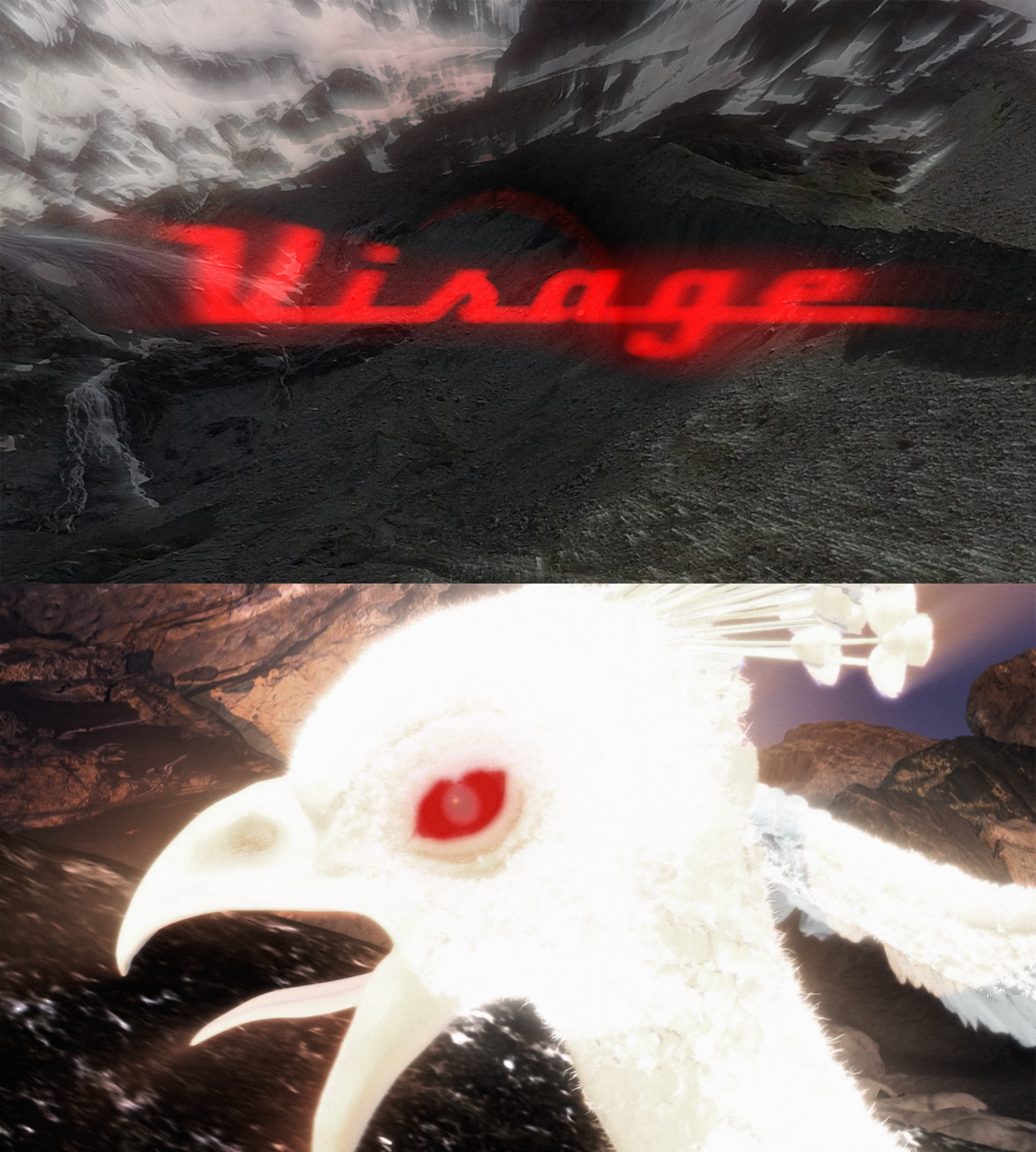
38th Panorama of Brazilian Art: 1000º
Museu de Arte Moderna de São Paulo, 3 October 2024 – 26 January 2025
As the name suggests, since 1969 the Panorama of Brazilian Art has served as an annual stock-taking of art production across Brazil. Originally the show took a different discipline each year, before becoming a cross-media curatorial survey: highlights included 2001 when the three curators presented a survey of para-institutions and collectives, and 2009 when the exhibition gave Adriano Pedrosa the first test-run of his 2024 Venice Biennale title, Foreigners Everywhere, translated then into Tupi as Mamõyguara opá mamõ pupé, and which controversially featured international artists in the mix. The best of the Panoramas have loosest themes however, and curators Germano Dushá, Thiago de Paula Souza and Ariana Nuala’s title 1000º (slang for an intense situation) is suitably broad to handle 34 pan-generational artists from across 16 of the 26 states. Look out for the dreamy video collaboration by Ceara’s Jonas Van & Juno B., the Candomblé ironmongery of José Adário dos Santos, and Thiago Martins de Melo’s violent iconographic painting. Oliver Basciano
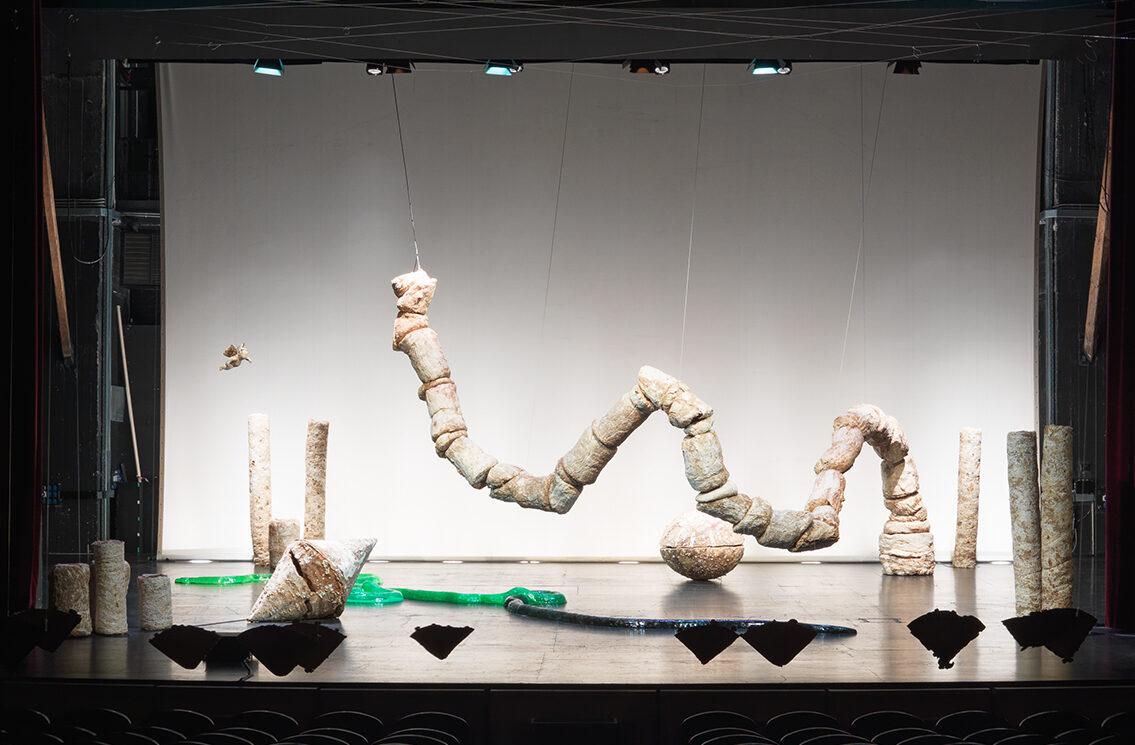
Nour Mobarak: Dafne Phono
Museum of Modern Art, New York, 26 October 2024 – 12 January 2025
At MoMA, Nour Mobarak will present, for the first time in a New York museum, a reprisal of an installation they exhibited at JOAN, Los Angeles, in 2022 and the Municipal Theatre of Piraeus, Athens, in 2023. Dafne Phono, Mobarak’s experimental, interspecies interpretation of a 1598 Italian opera based on Ovid’s tale of Apollo and Daphne – in which the naiad huntress Daphne turns into a laurel tree in an act of self-preservation – features a multichannel soundtrack and fifteen loosely geometric, organically formed sculptures. At its core, Dafne Phono is a translation project that explores the musicality of minor languages and proposes alternative modes of communication (hint: fungi are involved). Its sonic element comprises translations of the 16th-century opera into structurally complex languages such as Abkhaz, San Juan Quiahije Eastern Chatino, Silbo Gomero, Latin and !Xoon (only the hubristic Apollo’s speech remains in the Italian, a state language imposed over a broad range of local dialects in 1861). Here, sculptures perform, and quotidian speech is framed as a kind of song. Traditional materials, such as the marble from which Bernini sculpted his interpretation of the Greek myth (1622–1625), are jettisoned for intricate mycelial networks. Through layers of literary, art historical and scientific reference, Mobarak links the survival of minor languages to that of nonhuman intelligence and our ability to find new ways of speaking and being heard. Jenny Wu

The Imaginary Institution of India: Art 1975-1998, Barbican Centre, London, 5 October 2024 – 5 January 2025
The PEN Pinter Prize 2024: Arundhati Roy, British Library, 10 October; Pankaj Mishra, Southbank Centre, London, 11 October
Common sense would have it that, depending on where you stand, the relationship between visual art and the real world is either fraught or entirely delusional. That doesn’t stop curators trying to build bridges though; in fact, they love that kind of engineering! And so the Barbican’s survey of contemporary Indian art is bracketed by Prime Minister Indira Ghandi’s declaration of a State of Emergency in 1975 and the Pokhran nuclear tests (five of them, conducted by India) in 1998. The years inbetween are often described (in the real world) as ones of turbulence, but were instrumental in the shaping of India as we know it today; the idea is that it was also fertile ground in which to deposit the seeds of what we now understand to be contemporary art in the nation too. The exhibition is coorganised by the Kiran Nadar Museum of Art, New Delhi; its new premises (near New Delhi’s airport) are due to open in 2026. Which might provide some additional real-world context to the show (and its title) as well.
Meanwhile, India’s greatest living writer, Arundhati Roy, currently being prosecuted by the Indian government for her comments about what’s going on in the real world (in the disputed territory of Kashmir, more precisely), even though they were uttered 14 years ago, is also in London to deliver a lecture marking her being awarded the PEN Pinter Prize 2024. A reminder, ArtReview imagines, of both the power of words, the need to give a voice to the voiceless and of the importance of speaking truth to power. Perhaps it’s a happy coincidence, or, more likely, a sign of the times, that India’s (London-based) greatest public intellectual, writer and novelist Pankaj Mishra, takes to the stage later that same week, to deliver the keynote address at the inaugural New Dialogues: Contemporary Art From South Asia lecture series, organised by the Hayward Gallery, the Durjoy Bangladesh Foundation and Kochi-Muziris Biennale, at the Southbank Centre. The cancellation of Mishra’s proposed lecture on Gaza, due to be hosted at the Barbican Centre earlier this year, caused a wave of protests regarding the nature of free speech. His subject here: ‘Imagination in the Age of Censorship’. The talk marks the conclusion of a day of discussion about the state of South Asian art featuring the likes of Bani Abidi, Jeebesh Bagchi, Nikhil Chopra, Iftikhar Dadi, Munem Wasif, Sharmini Pereira, Hammad Nasar and Devika Singh. Nirmala Devi
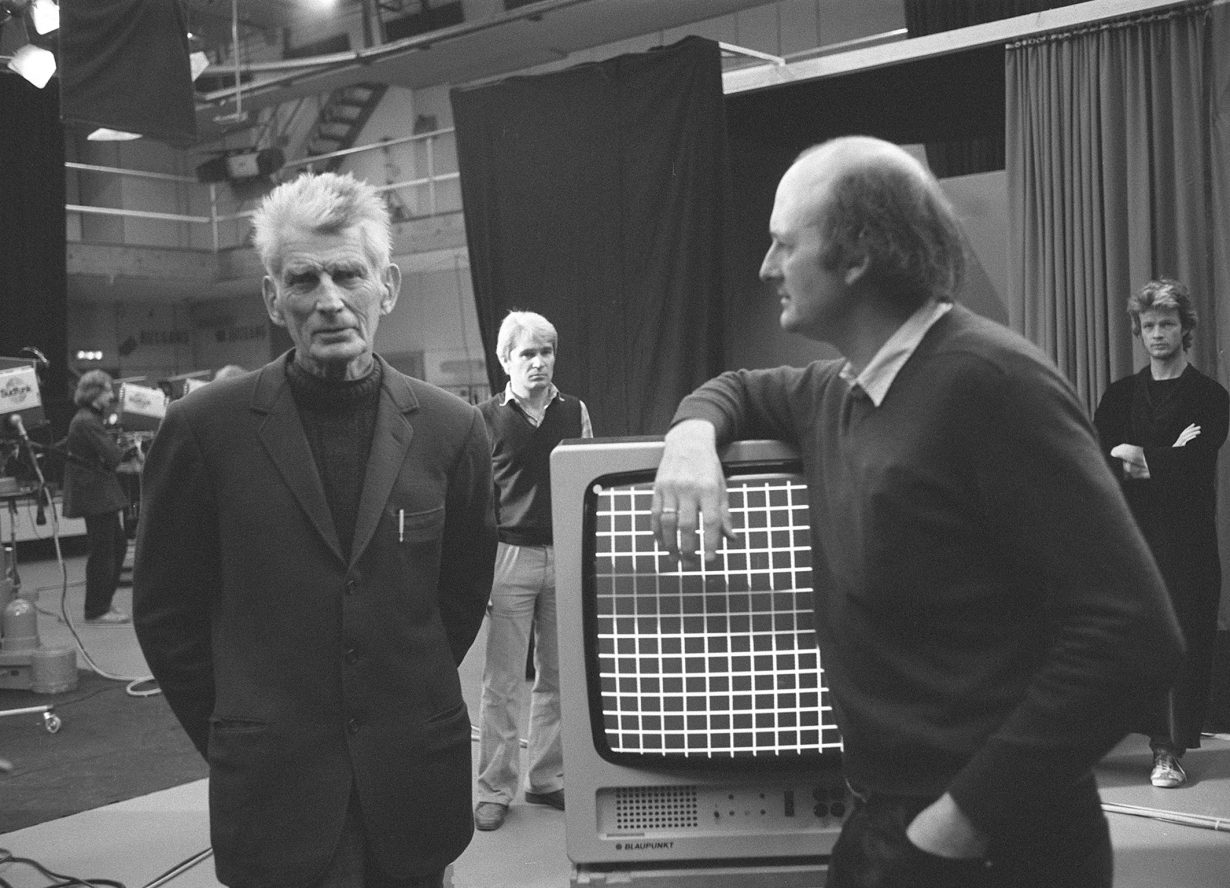
On Television, Beckett
WKV Stuttgart, 19 October 2024 – 12 January 2025
In the age of on-demand and live streaming, social media and the internet, popular media is currently undergoing the greatest transformation it has seen since the advent of television. When I look around me on public transport these days, I’m confronted by downward-tilted faces lit by the cool glow of small, portable, individual screens. It’s enough to make the notion of crowding around the TV set feel positively archaic. Yet when Samuel Beckett turned his attention from the stage (and the radio) to television for the first time in 1966, the medium was still relatively new to the masses. The format appealed to Beckett and the camera offered new opportunity to explore an interplay between speech, gesture and image within the frame of what he called the ‘closed space’ of the television ‘box’.
On Television, Beckett presents for the first time all seven of Beckett’s teleplays produced for regional German broadcaster Süddeutscher Rundfunk (SDR) in Stuttgart between 1966 and 1985, which he both wrote and directed. Also included is his television version of Not I, written originally for a single stage performer who remains invisible but for their illuminated mouth; produced for television by the BBC, it was broadcast by SDR alongside Geister Trio and … Nur noch Gewölk … in 1977 on Beckett’s insistence. The exhibition further contextualises the teleplays alongside other works broadcast on German television during the same time period, evoking the fragmented media landscape in which they would have appeared. The influence of the teleplays can be seen in the work of a younger generation of artists, including Canadian artist Stan Douglas’ ‘Monodramas’ (1991), abrupt 30-to-60-second videos that interrupted the usual adverts and entertainment when they were first broadcast nightly in British Columbia over several weeks. An early admirer of Beckett’s transmedial interests, Douglas previously curated an exhibition of Beckett’s teleplays at the Vancouver Art Gallery in 1988. Looking back today at Beckett’s experiments in the medium, you can’t help but wonder what he would have created for the atomised experience of absorption in our own portable devices, where we are never more than a few metres away from a screen. Louise Benson

Charlie Prodger: Cardinal Beams
Hollybush Gardens, 20 September – 26 October
London will be busy this October: there’s the London Film Festival, London Literary Festival, MCM Comic Con London, London Cocktail Week, and, erm, some art fair or another. Charlie Prodger’s pencil-and pastel works-on-paper have, on their surface, a pleasing tranquil affect: a shelf of postcards is framed by a crossthatch of window-pane shadows and dappled light (Volcano Snake Sun, September, all works 2024); a loose toolbag appears weightless against a clouded, cobalt sky (Jasmin Untethered, November); an open door with a wired glass window is backlit glowing orange (Arlington, August I); we peer between aeroplane seats, the creased leather covers stretched thin over corners like bedsheets (Austrian Light, December). It’s all some volte face from the iPhone videowork and electrical installation that brought Prodger Turner Prize and Venice Biennale fame. So we might wonder: are these drawings escapist, a kind of renewal?
Ideas of exposure and disclosure have long been a fixation for Prodger, and in the nakedness of these drawings, with their vulnerabilities, their smattering of explosions, something more visceral is achieved. One of those postcards, if we lean closer, depicts not a snowy mountain-cap but a rocky peak breaking violently apart. That loose toolbag is indeed weightless, the exhibition text tells us, the drawing based on a photograph of an item cast away form the International Space Station, destined for months of orbit and gradual disintegration. That wired window is labelled ‘POND’ but behind we see an indoor pool, so the angles are off, the orange heat coming, perhaps impossibly, from elsewhere. A slither of light across that aeroplane chair is red-lined and white-hot – it might burn through the thermoplastic. Alexander Leissle

Prix Marcel Duchamp 2024, Centre Pompidou, 2 October 2024 – 6 January 2025
Tituba, who protects us?, Palais de Tokyo, 17 October 2024 – 5 January 2025
If you’re looking to get an idea of the kind of art that’s ‘representative’ of France’s contemporary art scene, then head to this year’s Prix Marcel Duchamp exhibition, which has just opened at the Centre Pompidou. Named for the Dadaist and conceptual artist, the prize selects four artists each year, who then present their work at a group exhibition ahead of the first prize announcement. In Abdelkader Benchamma’s black-and-white ink and charcoal mural drawings imagery and ideas relating to natural environments, literature and philosophy coalesce as organic, flowing abstract wallworks. Angela Detanico and Rafael Lain, semiologists and graphic designers by training, interrogate the role of graphic signs and the role of language in society, which they translate into a multidisciplinary practice that includes print, sculpture, animation and light art. Noémie Goudal’s recent work is informed by research into paleoclimatology – the study of climate and geology from the perspective of ‘deep time’ – and documented via photography and film. While the final shortlisted artist Gaëlle Choisne’s works on paper and in sculpture take on a cosmic and spiritual aesthetic – including what she has described as ‘galactic, talismanic writing’ – to address colonial history, the trans and non-binary body and the ‘transgenerational’ family.
And if the themes in Choisne’s work piques your interest, you could wander down the river to Palais de Tokyo’s, Tituba, qui pour nous protéger? (Tituba, who protects us?), an exhibition of 11 international, diasporic artists whose works are brought together to reflect on migration, ancestralism, grief and the ‘everyday role played by our lost loved ones’ in the form of spiritual protectors. (We are looking forward, after all, to the end of the month when the veil between the living and the dead is at its thinnest and most permeable…) The exhibition, which takes as its point of reference Maryse Condé’s 1986 novel Moi, Tituba, sorcière noire de Salem, which is about a mixed-race enslaved woman who is accused of witchcraft, and who becomes involved in a plan to revolt against plantation owners in Barbados, brings together photography, painting, installation, film and sculpture by Naudline Pierre, Abigail Lucien, Rhea Dillon, Miryam Charles, Monika Emmanuelle Kazi, Naomi Lulendo, Inès Di Folco Jemni, Liz Johnson Artur, Tanoa Sasraku, Claire Zaniolo and Massabielle Brun. Fi Churchman

Tunga: Yo, vos y la luna
Museo de Arte Latinoamericano de Buenos Aires, 25 October 2024 – 17 February 2025
The last time I saw Tunga before his death in 2016, his hair was down to his shoulders and he was wearing a green velvet smoking jacket: he looked every bit the super cool wizard you might expect the Brazilian artist to be when encountering his work. Me, you and the moon was his final project, a large-scale installation made for a show in France (where a solo show of the artist’s work is currently on show at the Oscar Niemeyer-designed art pavilion of Château La Coste in Provence), and which was shown at the Museu de Arte Moderna de São Paulo last year, now arriving in Buenos Aires. It has all the strange ingredients those familiar with Tunga might expect: a giant bronze thumb suspended in a metal frame at the bottom of which an earthenware bowl sits. Two double-ended long thin bronze fingers are suspended from another frame across which a large log is lodged. Three metal plates hover on wire underneath the wood. It’s like a series of ingredients have been readied for an incantation (perhaps a prayer to the moon). Tunga was, however, no wanton mysticist, but a firm believer in modernism in its widest sense: the modern as the unknown future. ‘Art’s ability to respond to what we don’t know’ was his driving force and here the spell continues to be cast beyond the grave. Oliver Basciano
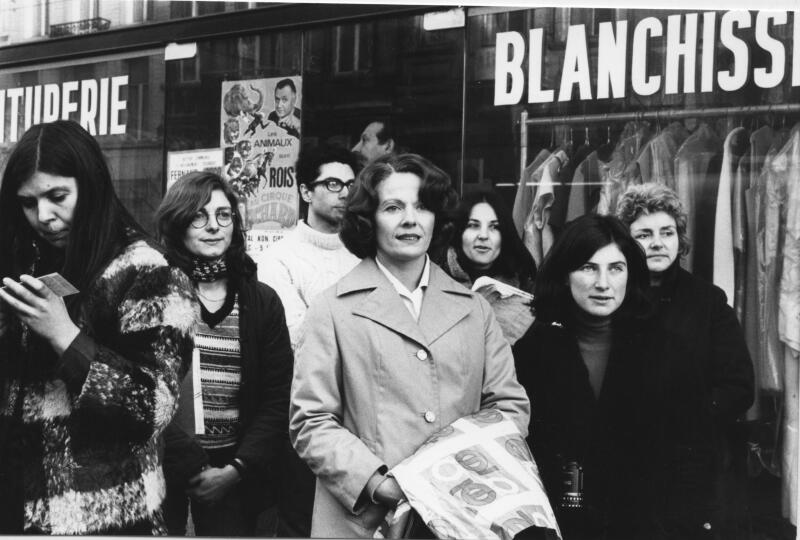
Chantal Akerman: Travelling
Jeu De Paume, Paris, 28 September 2024 – 19 January 2025
Touring from its opening leg at Bozar in Brussels earlier this year, Travelling offers a compact survey of the influential and maverick Belgian-born filmmaker Chantal Akerman who died in 2015. Across five decades, Akerman made films rooted in ordinary lives – often those of women – that renounced the easy conventions of mainstream cinema narrative. Blending avant-garde, documentary and structuralist approaches, Akerman’s films dwelled on the emotional predicaments of individuals, as much as capturing the visual landscape in which they existed, among these the seminal 1975 Jeanne Dielman, 23 quai du Commerce, 1080 Bruxelles. Told impassively in Akerman’s hallmark long-duration static shots, Jean Dielman follows a widowed Brussels housewife through a humdrum week of cleaning and chores, but also who prostitutes herself to make ends meet, and which ends with her murdering one of her clients. Estrangement and loneliness, and the inscrutability of human emotions and motivations course through Akerman’s oeuvre, influencing directors such as Gus Van Sant, Sophia Coppola and Joanna Hogg.
Akerman’s substantial filmography will be presented in an accompanying screening programme. Travelling’s gallery presentation will focus on Akerman’s later reach into visual art, in the multi-monitor video installations she developed from the early 1990s. These including the seven-channel reworking of the final sequence of Jeanne Dielman, Woman Sitting after Killing (2001), and From the Ease: Bordering on Fiction (1995), the monumental 25-screen orchestration of documentary film Akerman had collected through several years of travelling in the former Soviet Union and Eastern Europe; a kaleidoscopic journey through a society slowing disintegrating from its old state into something unknown. Balancing the lure of the filmed image, its capacity for finding inner life in the surface of the everyday, Akerman’s work remains a reference for how cinema might cut through to reality. J.J. Charlesworth

4th Karachi Biennale, 26 October – 10 November
3rd Lahore Biennale, 5 October – 8 November
For four months in 2022, Pakistan suffered what was estimated to be the worst floods in the country’s history. The rising waters, caused by heavy monsoon rain and melting glaciers (Pakistan has the most glaciers in the world outside of the Arctic and Antarctic), took 1,739 lives and caused $14.2 billion of economic loss, acutely felt in the agricultural sector. The fourth Karachi Biennale, curated by Waheeda Baloch under the title Rizq/Risk, takes the floods as its starting point, as well as questions of food security, culinary tradition and the colonisation of agriculture, culminating in a show that spreads across Karachi’s heritage sites, public parks and public galleries. Among the featured artists are theatre-making collective Tamasha and Farida Batool, whose photographs have long explored Pakistan’s political turmoil and social unrest, as well as performance artist Tino Sehgal, an international biennial stalwart.
Meanwhile, a little earlier this month, the third edition of the Lahore Biennale also opens. Curated by John Tain, formerly Head of Research at Asia Art Archive, the exhibition is titled Of Mountains and Seas, a reference, presumably to the fourth-century BCE Chinese literary classic, which describes a fantastical world of mythical beasts and landscapes (and later played a prominent role in Beijing Coma, Ma Jian’s account of the Tiananmen Square protests of 1989). The 60 artists with work on show (from 30 countries) include perennial Biennale favourites such as Bani Abidi, Saodat Ismailova, Zheng Bo, Haegue Yang, Tomás Saraceno, and Sopheap Pitch. But that’s not to say that there won’t be some surprises too. Luc Querrey and Nirmala Devi
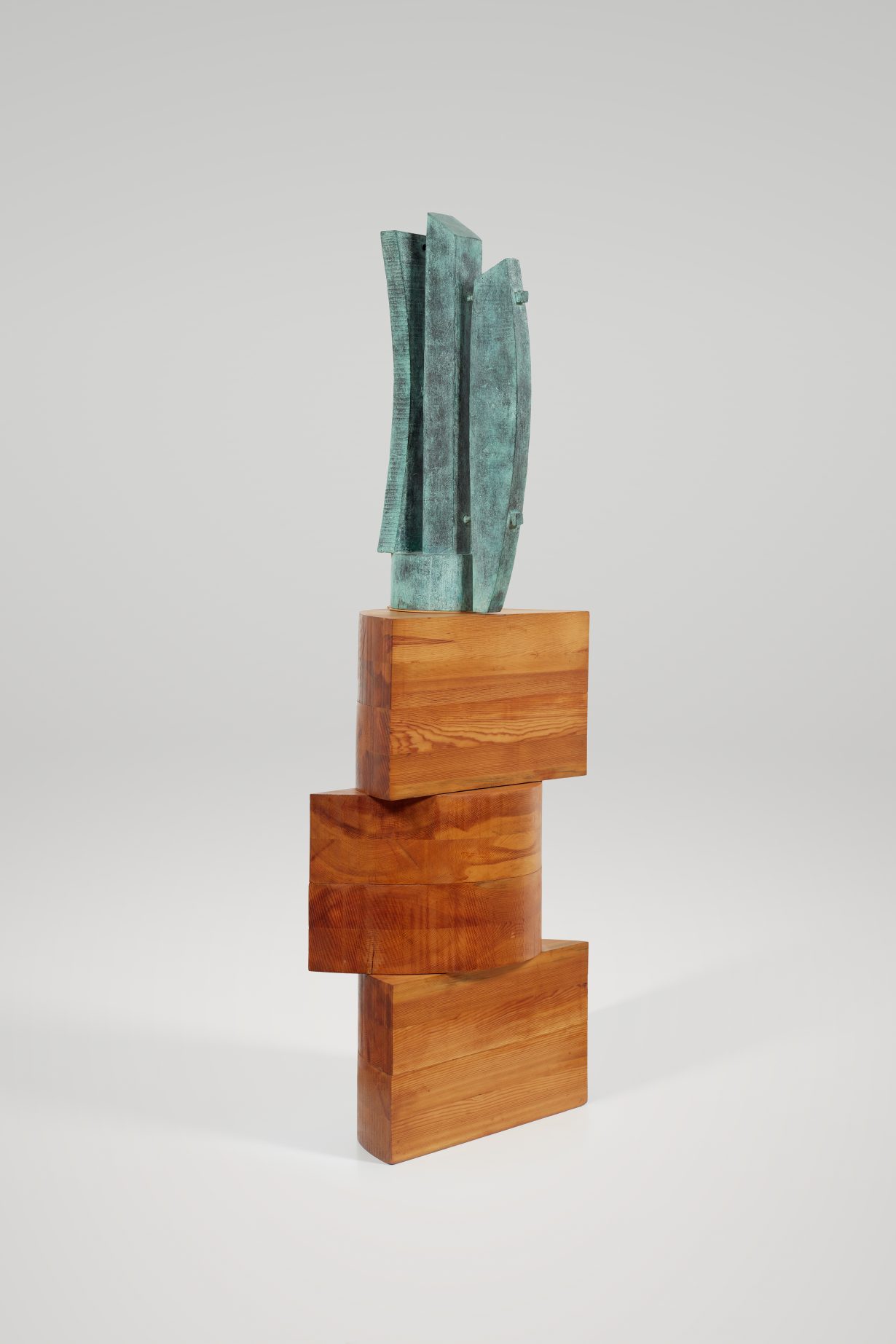
Kim Lim, The Space Between
National Gallery Singapore, 27 September 2024 – 2 February 2025
The Singapore-born British artist Kim Lim is best known for stone and wood abstract sculptures, as well as prints, that blend Eastern and Western cultural aesthetics, inspired by her experiences of living in Singapore, Malaysia and the UK. A series of minimalist prints from 1972, Ladder, for example, recalls the hierarchy of consciousness practised in Buddhism. Drawing on natural and manmade forms, Lim’s works place an emphasis on space, texture, rhythm, light and shadow, and were as much informed by patterns produced by nature as they were by traditional genres such as calligraphy and Chinese landscapes. The Space Between will explore ‘the role of Lim’s cultural in-betweenness’ with works that span Lim’s four-decade career. Alongside her sculptures and prints will be displayed maquettes and ‘never-before-seen’ photographs. Fi Churchman